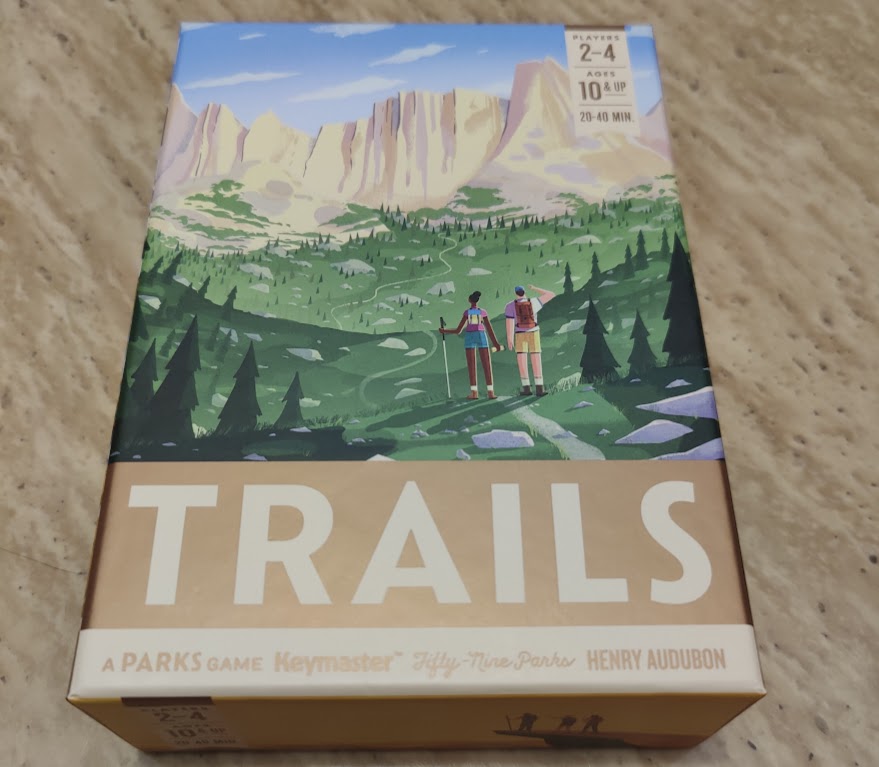I find my board game collection shrinking, and my board game time shrinking with it. I recently went through a fairly massive gaming clean out, and the biggest conclusion I reached over time was this:
I don’t have time for huge games.
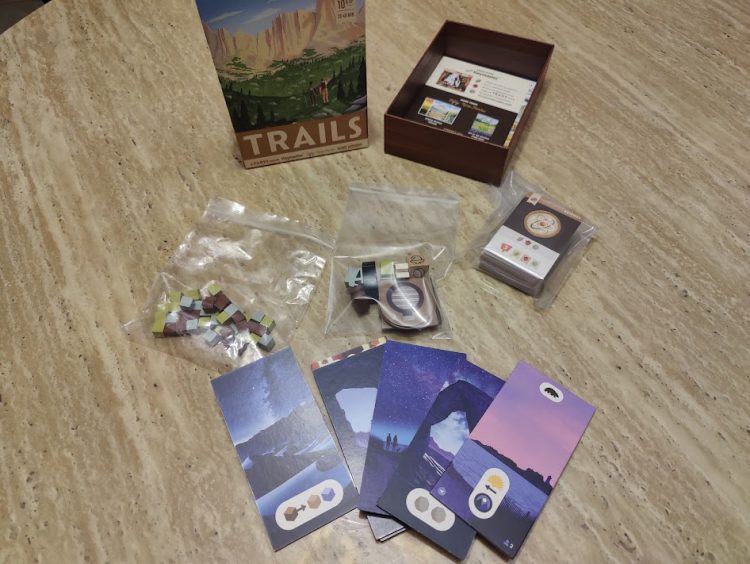
It was a tough realization. Many deluxe, gigantic, complex board games are the dreams of a board gaming enthusiast. Big, complex systems, chunky meeples or minis, big, gorgeous boards, dense rulebooks, promises of hours and days of gaming. All, collectively, sitting in the dark, in dust, in shrink, doing nothing.
Lately, as much as I’m perhaps reluctant to admit it, the most fun I have with board gaming comes in packages barely bigger than a single HQ Space Marine model. Card games, small games, all forms of tiny games. What is even more maddening in this equation is that the games I’ve enjoyed the most in recent memory weren’t picked up from my FLGS, but from Target.
I’m not really sure what’s happening to board gaming, or to me, but I know that to clear my head, I like to go hiking. Well, not really. Figuratively. And for that purpose, I turn to Trails, by Keymaster Games.
Walk the Line
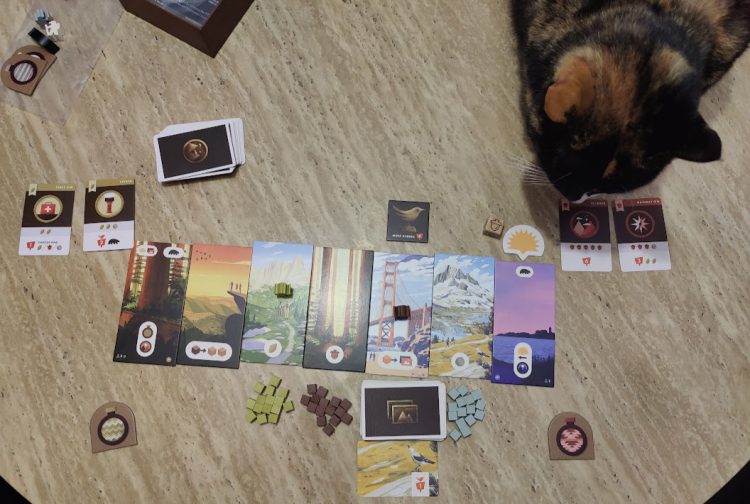
Trails is, depending on how you want to view it, a spin-off, sibling, sequel, or “simplified” version of Keymaster’s previous game, Parks. I enjoyed Parks enough when it came out, but found that for such a supposedly ‘simple’ game, Parks was a fairly fiddly game that became a slog at player counts higher than 2. The ability to block player movement, similar in some ways to Tokaido, could also make games last forever as players would strategically slow-roll the map. Other things, such as certain badges, were far too valuable compared to others. I never really found this overly terrible or annoying, but it made me think twice about digging Parks out for “quick” games or relaxing with people who are new to gaming. The solo mode was a fun diversion, and I will mention ahead of time that Trails does not have a solo mode, so if you are primarily interested in that, you will likely wish to stick with Parks.
So when I saw Trails on sale at Target for 15 dollars, I figured why not give it a try. I’m glad I did, because Trails is now my go to “chill” game, and I think it’s perfect for relaxing with as the nights get longer and the weather gets cozier. In Trails, 2-4 players trek their way back and forth across various wilderness locations, picking up random detritus (stones, leaves, and acorns) that they can exchange for badges at either ends of the trail or from a card in their hand. As players make it to the Trail End the Sun marker moves, slowly flipping tiles from Day to Night, and finally leading to the end game where scores are tallied. That’s the entire game, with very few wrinkles or changes. Trails is, quite literally, a straight line with no deviations, and I love it for that. On their turn, players can move one or two spaces normally, or expend their canteen to move as far along the trail as they like, refilling it at either Trail Start or End. A unique quirk is that unlike Parks, players cannot block each other’s paths, and play starts with players moving in opposite directions, with one player starting at the Trail Start and the other at the End.
While there is no direct player interaction in this regard, players can affect the plans of each other in mild ways. Buying badges filters in new ones, but may throw a player’s purchasing plans into disarray. Encounters with the Bear token moves the token around, meaning that a planned move might become more or less lucrative in the next turn cycle. The most directly impactful and competitive action deals with the photographs, as players vie for the Bird trophy at the end of the game primarily through bird icons on photographs. Otherwise, each player takes their turn moving up and down the trail, collecting resources and photographs in preparation for scoring, and the game ends with a simple and quick tallying of score totals at the end of the game. Each game I’ve played of trails has been quite close, with only a few points separating the winner from second place, meaning that it is fairly difficult for the game to become a blow-out.
Something nice I noticed is that Trails also succeeds at all of the various player counts it can support. 2 players is a fairly slow, relaxed game, while 4 is a somewhat faster (as night falls quicker) but still relaxing game. In fact, Trails is a little susceptible to players getting distracted as the game is simple, so I am highly supportive of the ‘phones down, music on’ style of gameplay for proper Trails enjoyment.
Bigger Concepts in Smaller Packages
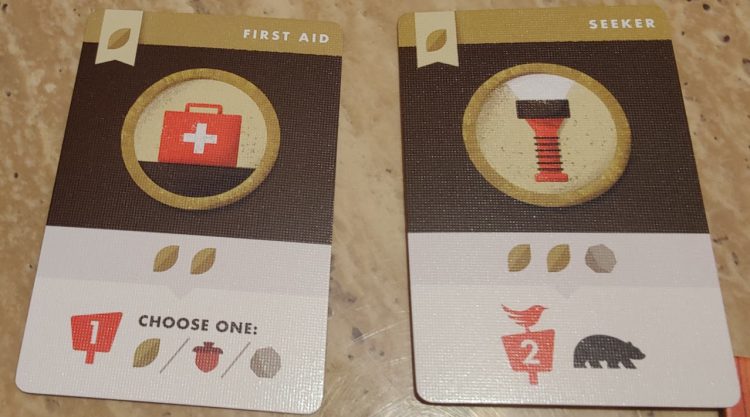
Trails is one of a few recent attempts at ‘shrinking’ bigger games. In some cases, these attempts are so distinctly different from the original that they barely qualify as being comparative (Troyes Dice or Lorenzo il Magnifico’s dice game, for example), while others seem to change core concepts in ways that make the game play, while not essentially worse, differently, such as Ares Expedition. With Trails, the opposite seems to have happened: Trails distills the main essence of Parks into something quicker, snappier, and far less confusing. In fact, I’m currently debating what role Parks actually plays in my collection, but I will need to revisit that game for a different time, so let’s just say that Trails does what a lot of these other attempts at ‘slimming down’ games tend to get wrong: it literally just makes the game smaller in scope and focus, with the same feeling and tone.
The box for Trails says 20-40 minutes, and this is absolutely true. The game does not overstay its welcome, and even at max players, takes maybe 5 minutes to explain and the rest is all pure playing and gliding. There is little to manage, no ways for players to interfere with one another directly, and no need to think cutthroat about winning. The art is as gorgeous as Parks, although you are no longer vying to buy the ‘parks’ themselves for points, but even in a small package Trails manages to look visually appealing on a table. Best of all is that the game is exceptionally portable; it takes up less than 2 feet of table space, and could likely easily be played on the go without much worry about losing pieces (my actual suggestion: just use a small pad to denote resources rather than worry about losing cubes).

One complaint I’d lob against Trails is that, perhaps, the game is actually too simple. This is both a charm and a weakness, as players looking for more complex or complicated games will find little to interest them in Trails, but personally I find myself drawn to these games more and more these days. Games like Barenpark, Red Rising and Trails are starting to hit the perfect spot for the types of games I’m able to play and play consistently. If one of your biggest issues is that you tend to have 4 or less players and scant time to play huge brain burners, a game like Trails might be exactly up your alley. If you’re looking for something to make your head sizzle, though, Trails will likely leave you a bit cold.
Walking a Lonely Road
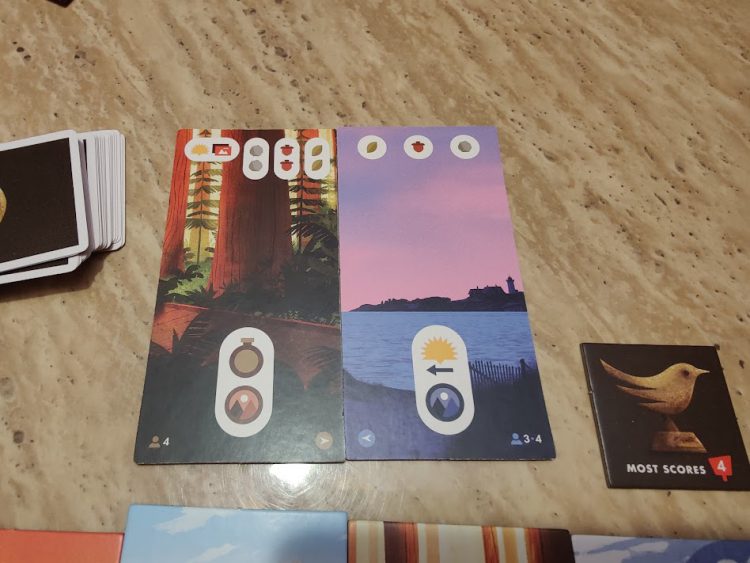
A problem of juggling “adult” life is that there are often just not enough hours in days or weeks to get things done. In the wake of COVID-19, I’ve found this even more true with board games. As I’ve started being able to game with our gaming couple friends again, we’ve only managed to have about 5 or 6 meetings since May, and the time in which I have with my partner, or myself, to play board games is drastically hindered by daily errands, work requirements, personal time, and just a myriad of other possible intrusions into “game time”. Even the fact of what type of game to play, when, with who, and what to prioritize leads me to find board games, one of my favorite hobbies, something I have less and less time for and harder and harder space to find to play.
Games like Trails have started to help save me from a spiral of “well, guess I just can’t play games anymore”. Yes, I love to crank out a huge, deluxified game that eats an entire table and day to play, but I find that when I really do want to play games, my schedule allows 1 or 2 hours of downtime, and in these moments games like Trails are true lifesavers. When the lights are dimmed, and there’s really just me, another person, and some quiet in the house, games like this take my to exactly the type of place I want to be: enjoying a game with other people, thinking about little else than the company on the trail and the amount of birds I’ve seen that day.
